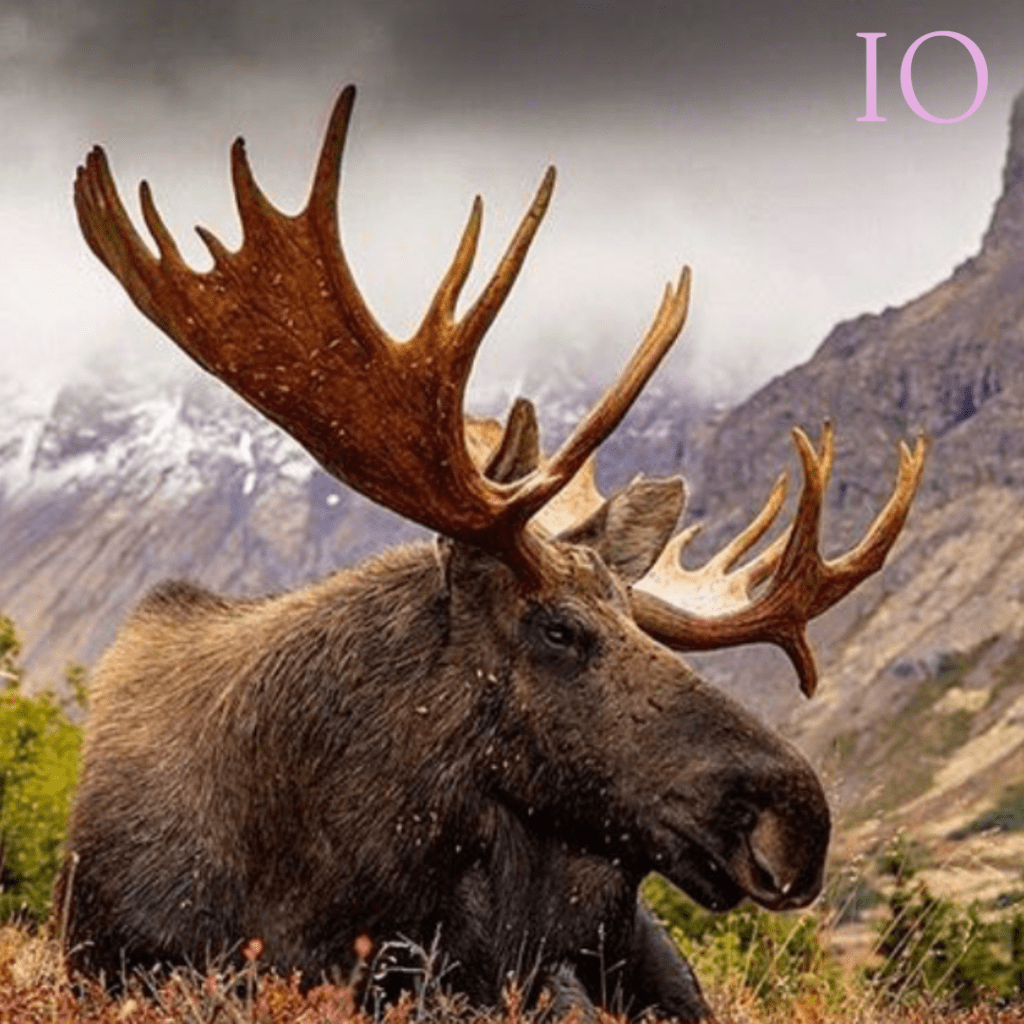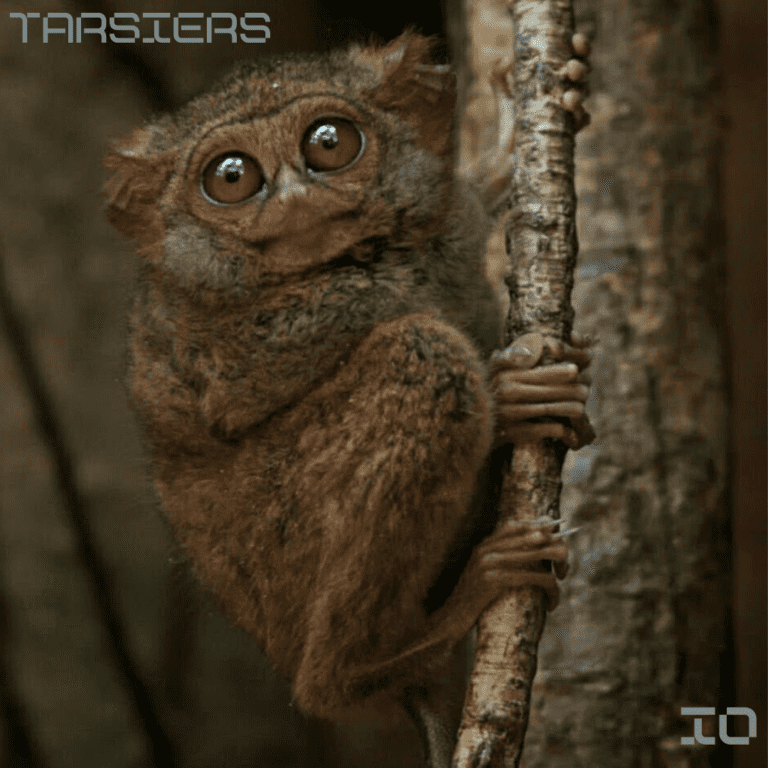MOOSE
Moose are the largest members of the deer family, standing six feet (1.8 meters) tall from hoof to shoulder, and weighing in at more than 1,000 pounds (450 kilograms). Each of their light to dark brown hairs is hollow, and the air trapped inside provides insulation. A flap of skin called a dewlap hangs from the throat. Males are distinguished from females by their antlers, which grow up to six feet across.
Moose typically inhabit boreal forests and temperate broadleaf and mixed forests of the Northern Hemisphere in temperate to subarctic climates. Hunting and other human activities have caused a reduction in the size of the moose’s range over time. It has been reintroduced to some of its former habitats. Currently, most moose occur in Canada, Alaska, New England (with Maine having the most of the lower 48 states), New York State, Fennoscandia, the Baltic states, Poland, Kazakhstan, and Russia.
Its diet consists of both terrestrial and aquatic vegetation. Predators of moose include wolves, bears, humans, wolverines (rarely), and orcas (while feeding underwater). Unlike most other deer species, moose do not form herds and are solitary animals, aside from calves who remain with their mother until the cow begins estrus (typically at 18 months after birth of the calf), at which point the cow chases them away. Although generally slow-moving and sedentary, moose can become aggressive, and move quickly if angered or startled. Their mating season in the autumn features energetic fights between males competing for a female.
ANTLERS
Bull moose have antlers like other members of the deer family. Cows select mates based on antler size. Bull moose use dominant displays of antlers to discourage competition and will spar or fight rivals. The size and growth rate of antlers is determined by diet and age; symmetry reflects health.
The male’s antlers grow as cylindrical beams projecting on each side of the head at right angles to the midline of the skull, and then fork. The lower prong of this fork may be either simple, or divided into two or three tines, with some flattening. Most moose have antlers that are broad and palmate (flat) with tines (points) along the outer edge.
Within the ecologic range of the moose in Europe, those in northerly locales display the palmate pattern of antlers, while the antlers of European moose over the southerly portion of its range are typically of the cervina dendritic pattern and comparatively small, perhaps due to evolutionary pressures of hunting by humans, who prize the large palmate antlers. European moose with antlers intermediate between the palmate and the dendritic form are found in the middle of the north–south range. Moose with antlers have more acute hearing than those without antlers; a study of trophy antlers using a microphone found that the palmate antler acts as a parabolic reflector, amplifying sound at the moose’s ear.
Growing antlers are covered with a soft, furry covering called “velvet”. Blood vessels in the velvet transport nutrients to support antler growth.
The antlers of mature Alaskan adult bull moose (5 to 12 years old) have a normal maximum spread greater than 200 centimeters (79 in). By the age of 13, moose antlers decline in size and symmetry. The widest spread recorded was 210 centimeters (83 in) across. An Alaskan moose also holds the record for the heaviest weight at 36 kilograms (79 lb).
Antler beam diameter, not the number of tines, indicates age. In North America, moose (A. a. americanus) antlers are usually larger than those of Eurasian moose and have two lobes on each side, like a butterfly. Eurasian moose antlers resemble a seashell, with a single lobe on each side.
In the North Siberian moose (A. a. bedfordiae), the posterior division of the main fork divides into three tines, with no distinct flattening. In the common moose (A. a. alces) this branch usually expands into a broad palmation, with one large tine at the base and a number of smaller snags on the free border. There is, however, a Scandinavian breed of the common moose in which the antlers are simpler and recall those of the East Siberian animals. The palmation appears to be more marked in North American moose than in the typical Scandinavian moose.
After the mating season males drop their antlers to conserve energy for the winter. A new set of antlers will then regrow in the spring. Antlers take three to five months to fully develop, making them one of the fastest growing animal organs. Antler growth is “nourished by an extensive system of blood vessels in the skin covering, which contains numerous hair follicles that give it a ‘velvet’ texture.
This requires intense grazing on a highly-nutritious diet. By September the velvet is removed by rubbing and thrashing which changes the colour of the antlers. Immature bulls may not shed their antlers for the winter, but retain them until the following spring. Birds, carnivores and rodents eat dropped antlers as they are full of protein and moose themselves will eat antler velvet for the nutrients.
If a bull moose is castrated, either by accidental or chemical means, he will shed his current set of antlers within two weeks and then immediately begin to grow a new set of misshapen and deformed antlers that he will wear the rest of his life without ever shedding again; similarly deformed antlers can result from a deficiency of testosterone caused by cryptorchidism or old age.
In extremely rare circumstances, a cow moose may grow antlers. This is usually attributed to a hormone imbalance.
These deformed antlers are composed of living bone which is still growing or able to grow, since testosterone is needed to stop antler growth; they may take one of two forms. “Cactus antlers” or velericorn antlers usually retain the approximate shape of a normal moose’s antlers but have numerous pearl-shaped exostoses on their surface; being made of living bone, they are easily broken but can grow back. Perukes are constantly growing, tumor-like antlers with a distinctive appearance similar to coral.
Like roe deer, moose are more likely to develop perukes, rather than cactus antlers, than the more developed cervine deer, but unlike roe deer, moose do not suffer fatal decalcification of the skull as a result of peruke growth, but rather can support their continued growth until they become too large to be fully supplied with blood. The distinctive-looking perukes (often referred to as “devil’s antlers”) are the source of several myths and legends among many groups of Inuit as well as several other tribes of indigenous peoples of North America.
HOOVES
As with all members of the order Artiodactyla (even-toed ungulates), moose feet have two large keratinized hooves corresponding to the third and fourth toe, with two small posterolateral dewclaws (vestigial digits), corresponding to the second and fifth toe. The hoof of the fourth digit is broader than that of the third digit, while the inner hoof of the third digit is longer than that of the fourth digit. This foot configuration may favor striding on soft ground.
The moose hoof splays under load, increasing surface area, which limits sinking of the moose foot into soft ground or snow, and which increases efficiency when swimming. The body weight per footprint surface area of the moose foot is intermediate between that of the pronghorn foot, (which have stiff feet lacking dewclaws—optimized for high-speed running) and the caribou foot (which are more rounded with large dewclaws, optimized for walking in deep snow). The moose’s body weight per surface area of footprint is about twice that of the caribou.
On firm ground, a bull moose leaves a visible impression of the dewclaws in its footprint, while a cow moose or calf does not leave a dewclaw impression. On soft ground or mud, bull, cow, and calf footprints may all show dewclaw impressions.
PROBOSCIS AND OLFACTION
The moose proboscis is distinctive among the living cervids due to its large size; it also features nares that can be sealed shut when the moose is browsing aquatic vegetation. The moose proboscis likely evolved as an adaptation to aquatic browsing, with loss of the rhinarium, and development of a superior olfactory column separate from an inferior respiratory column. This separation contributes to the moose’s keen sense of smell, which they employ to detect water sources, to find food under snow, and to detect mates or predators.
SKIN AND FUR
Moose skin is typical of the deer family. Moose fur consists of four types of hair: eyelashes, vibrissae, guard hairs and wool hairs. Hair length and hair density varies according to season, age, and body region. The coat has two layers—a top layer of long guard hairs and a soft wooly undercoat. The guard hairs are hollow and filled with air for better insulation, which also helps them stay afloat when swimming.
DEWLAP
Both male and female moose have a dewlap or bell, which is a fold of skin under the chin. Its exact function is unknown, but some morphologic analyses suggest a cooling (thermoregulatory) function. Other theories include a fitness signal in mating, as a visual and olfactory signal, or as a dominance signal by males, as are the antlers.
TAIL
The tail is short (6 cm to 8 cm in length) and vestigial in appearance; unlike other ungulates the moose tail is too short to swish away insects.
DECLINE IN POPULATION
Since the 1990s, moose populations have declined dramatically in much of temperate North America, although they remain stable in Arctic and subarctic regions. The exact causes of specific die-offs are not determined, but most documented mortality events were due to wolf predation, bacterial infection due to injuries sustained from predators, and parasites from white-tailed deer to which moose have not developed a natural defense, such as liver flukes, brain worms and winter tick infestations. Predation of moose calves by brown bear is also significant.
Landscape change from salvage logging of forest damage caused by the mountain pine beetle has resulted in greater foraging in logged areas by female moose, and this is the lead hypothesis as to why the moose population is declining in eastern North American forests, as this likely leads to increased predation. An alternate hypotheses among biologists for generalized, nonhunting declines in moose populations at the southern extent of their range is increasing heat stress brought on by the rapid seasonal temperature upswings as a result of human-induced climate change.
Biologists studying moose populations typically use warm-season, heat-stress thresholds of between 14 and 24 °C (57 and 75 °F). However, the minor average temperature increase of 0.83–1.11 °C (1.5–2 °F), over the last 100 years, has resulted in milder winters that induce favorable conditions for ticks, parasites and other invasive species to flourish within the southern range of moose habitat in North America.
The moose population in New Hampshire fell from 7,500 in the early 2000s to a 2014 estimate of 4,000 and in Vermont the numbers were down to 2,200 from a high of 5,000 animals in 2005. Much of the decline has been attributed to the winter tick, which, between 2017 and 2019, accounted for 74% of all winter mortality and 91% of winter calf deaths in Vermont.
Moose with heavy tick infections will rub their fur down to the skin raw trying to get the ticks off, making them look white when their outer coat rubs off. Locals call them ghost moose. Loss of the insulating winter coat through attempts to rid the moose of winter tick increases the risk of hypothermia in winter.


